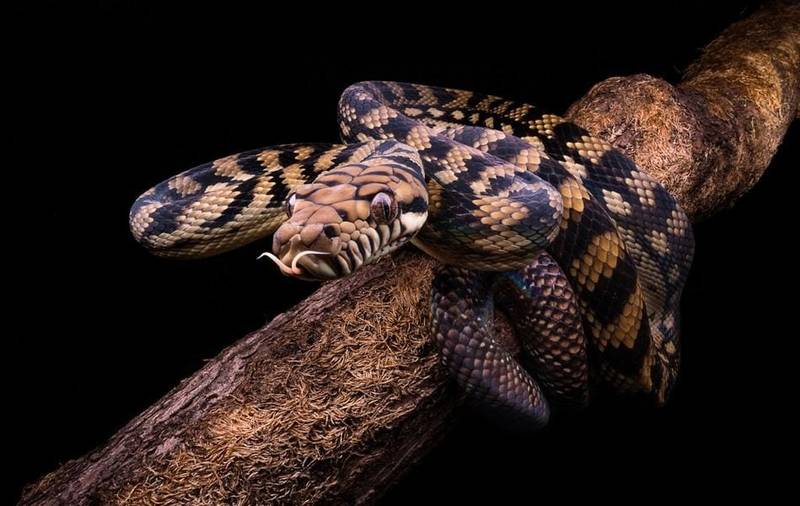The 10 Biggest Snakes in the World
Among the most varied reptiles on the planet are snakes. The majority of snakes are in the intermediate size range, but the exceptions are remarkable. The size of species varies, ranging from enormous pythons that reach over 30 feet (9 meters) in length to small, thread-like snakes that are only 4 inches (10 cm) long.
Why Do Certain Snakes Get So Big?
Snake sizes are influenced by a mix of biological, environmental, and evolutionary variables. The main factors limiting snake size are access to food, housing space, and temperature regulation.
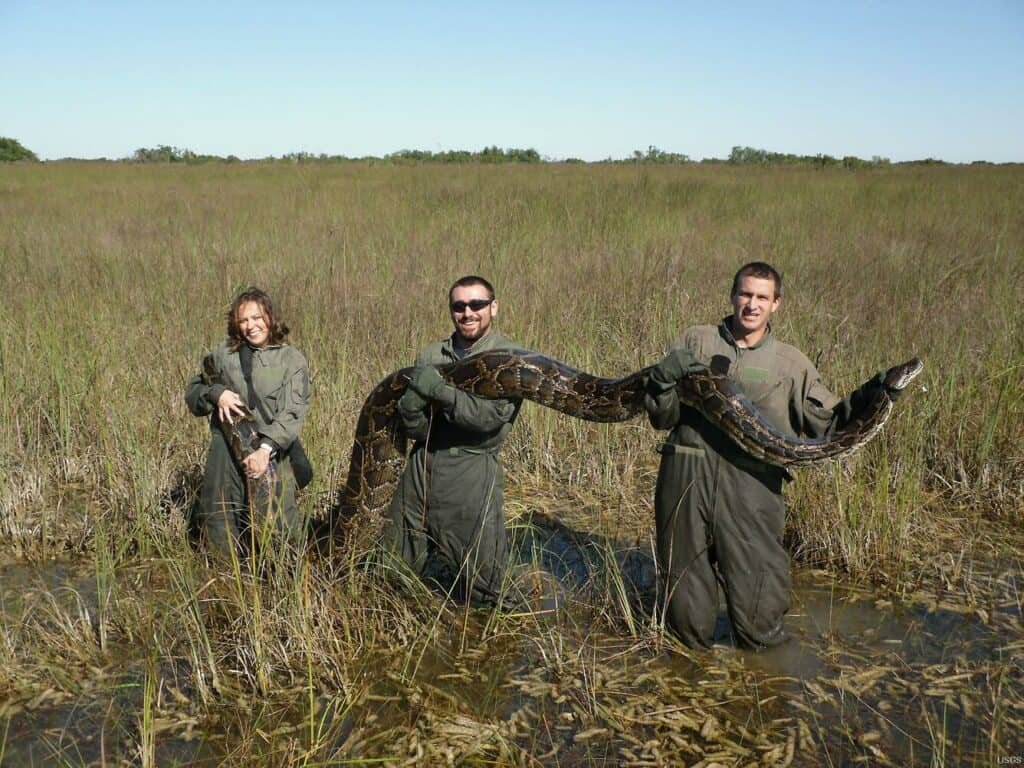
Snakes’ large bodies offer a number of evolutionary benefits. Smaller snakes’ growth is naturally constrained by their reliance on smaller prey items, such as insects or small rodents. Because they can catch and subdue larger prey, larger snakes are more effective predators and may consume more calories to maintain their mass. Potential predators are also put off by their size. Giant snakes must have access to dependable food sources and enough habitat to meet their demands, though, so reaching such a size necessitates a careful balance.
Their ectothermic, or cold-blooded, metabolism is supported by warm, steady temperatures in tropical areas. This enables them to focus more of their energy on growing rather than controlling their body temperature. Furthermore, some snake species can achieve remarkable lengths and weights in these settings since there are fewer physical restrictions. Giant snakes are predominantly found in resource-rich, low-competition environments.
The World’s 10 Largest Snakes
1. Reticulated Python (Malayopython reticulatus)
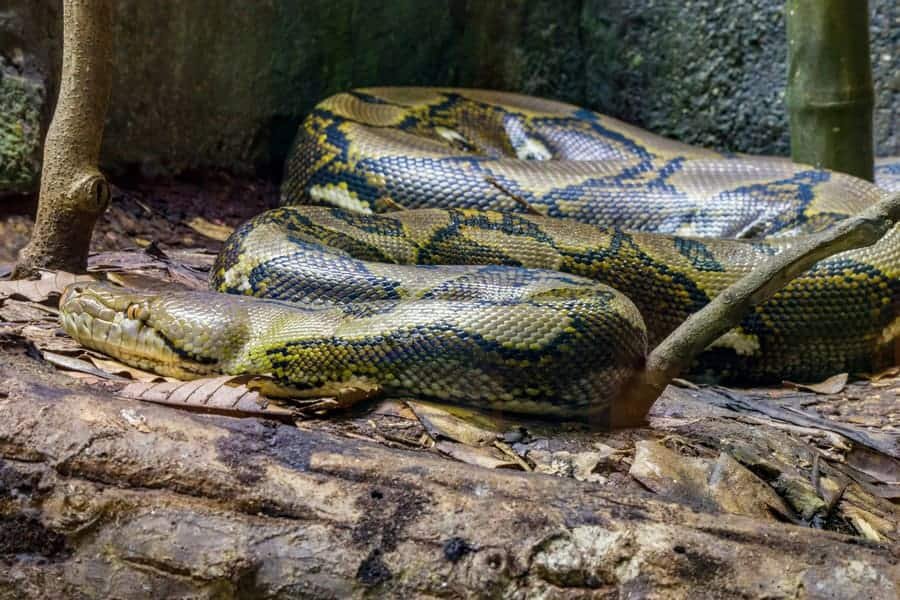
The reticulated python, which is native to Southeast Asia, is the longest snake in the world, growing up to 30 feet (9 meters) in length. The reticulated pattern—a sophisticated web of tan, brown, and black scales—on the slender, muscular bodies of these pythons aids in their ability to blend in with their forest surroundings. Despite being frequently found in rainforests, they can adapt well to riverine environments and even places where people are present. Known for ambush hunting, reticulated pythons frequently target large animals like deer and wild boar, using their strong muscles to smother and choke their prey. Their capacity to hunt creatures the size of humans has raised concerns about some sightings near settlements.
The world record for the largest snake ever recorded in modern times goes to a reticulated python (Malayopython reticulatus) named “Medusa.” Officially measured in 2011, Medusa was 25 feet 2 inches (7.67 meters) long and weighed approximately 350 pounds (159 kilograms).
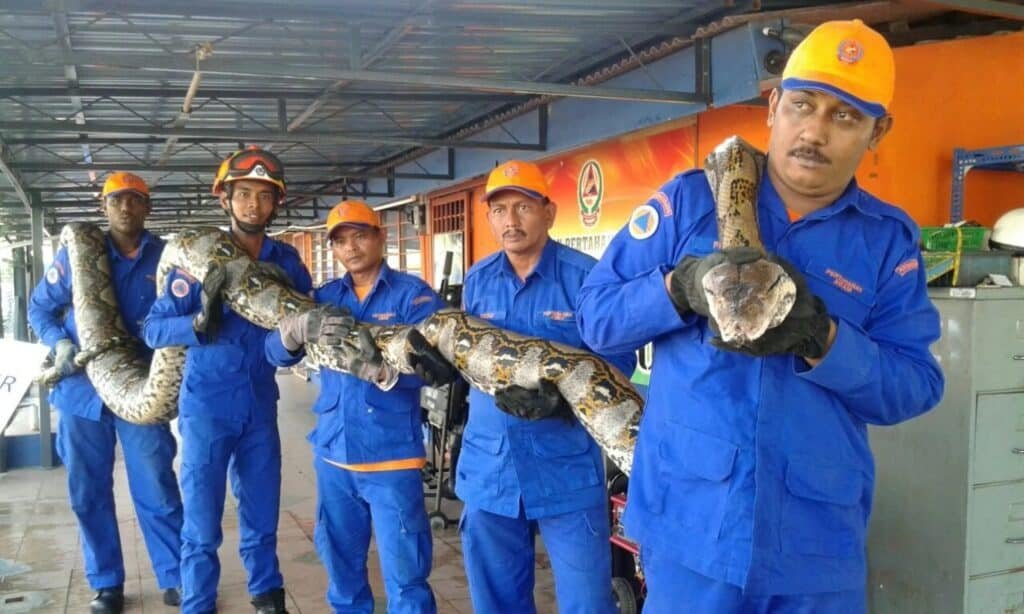
The previous record set by Medusa may have been surpassed in 2016 when construction workers in Paya Terubong, Penang, Malaysia, found a reticulated python that was said to be 26 feet (7.9 meters) long. It was estimated that this snake weighed about 250 kilogrammes, or 550 pounds. Regretfully, the Malaysian python was not formally measured or confirmed to be a world record. Four days after being seized, it passed away.
2. Green Anaconda (Eunectes murinus)
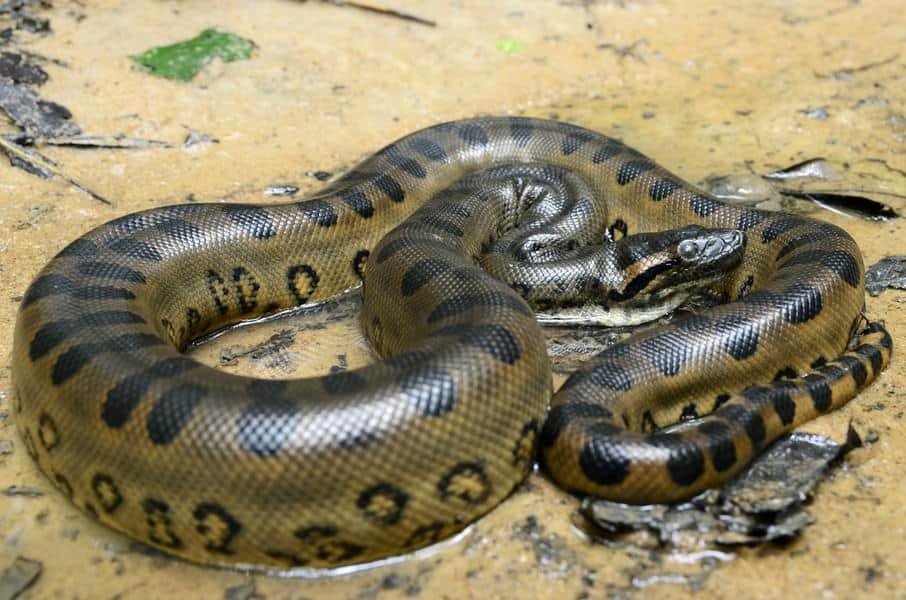
The largest snake is the green anaconda, which is indigenous to South American marshes and rivers. Adults can weigh up to 550 pounds (250 kilogrammes) and reach a length of 30 feet (9 meters). These anacondas are highly aquatic and rely on stealth, frequently resting submerged along the water’s edge to ambush unwary prey. This contrasts with pythons, which prefer dry soil. They suffocate their victim by wrapping their coils firmly around it before eating it, and they are known to target large animals like caimans, capybaras, and occasionally jaguars. The majority of interactions between the green anaconda and humans take place in the Amazon’s deep jungles, despite the animal’s size and strength.
3. Burmese Python (Python bivittatus)
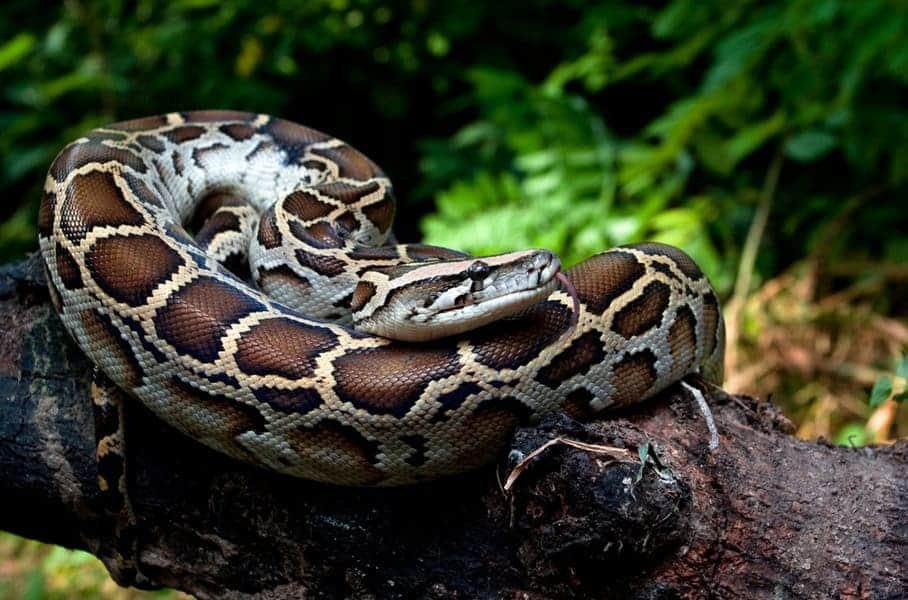
Burmese pythons are among the largest snakes in Asia, growing to a length of approximately 23 feet (7 meters) and weighing about 200 pounds (90 kilogrammes). Known for their striking brown and tan patterns, Burmese pythons are found in South-east Asian forests, marshes, and riverbanks. They are strong constrictors that encircle mammals and birds with their coils until they are unable to breathe. However, in areas such as Florida, where they are an invasive species, Burmese pythons have negatively affected local wildlife, devouring native animals that have little protection from these large, non-native predators.
4. African Rock Python (Python sebae)
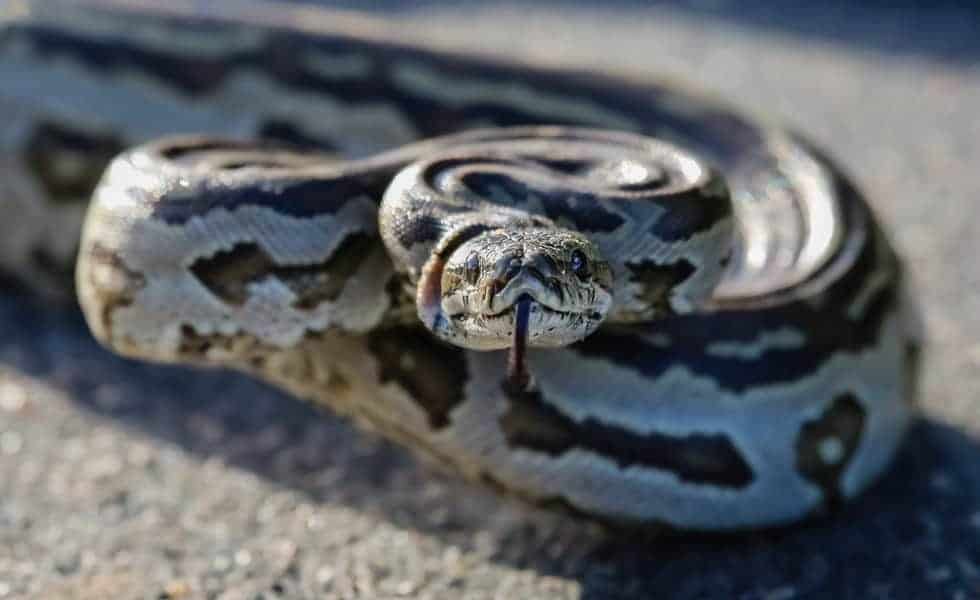
The largest snake in Africa is the African rock python, which may grow to a length of 20 feet (6 meters) and weigh more than 200 pounds (90 kilogrammes). Found in savannas, forests, and rocky regions throughout sub-Saharan Africa, it is distinguished by its thick, muscular physique and unique patterning of yellow, brown, and black. Despite their reputation for violence, these pythons are skilled hunters that consume crocodiles, birds, and small antelope. Although typically wary of humans, African rock pythons are known for their defensive nature, especially when threatened or cornered.
5. Indian Python (Python molurus)
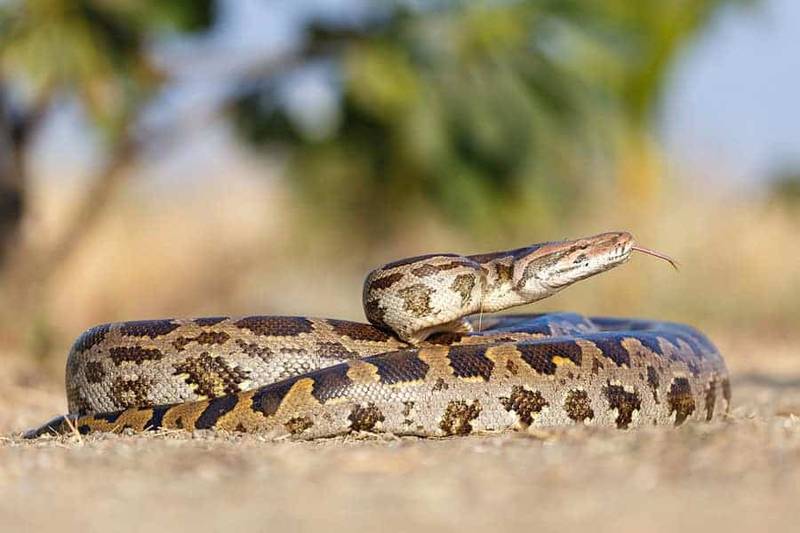
Similar to the Burmese python, the Indian python can grow up to 20 feet (6 meters) in length and weigh up to 150 pounds (68 kilogrammes). These pythons live in wetlands, grasslands, and forests all over the Indian subcontinent. They can effectively camouflage themselves by using their characteristic light and dark brown pattern to ambush prey such as rodents, birds, and occasionally deer. In some indigenous communities, the Indian python is regarded as a sign of power and perseverance. These pythons are usually submissive around people, despite their size.
6. Amethystine Python (Simalia amethistina)
The Amethystine python, also called the scrub python, is indigenous to Indonesia, Papua New Guinea, and Australia. It can grow up to 20 feet (6 meters) in length, but most are only 16 feet (4.9 meters) long on average. Its glossy, iridescent scales give it a striking appearance, and it thrives in rainforests and tree-filled environments where it can climb well. It feeds on birds, bats, and small mammals and strikes swiftly from tree branches or dense foliage; it strikes quickly.
7. Boa Constrictor (Boa constrictor)
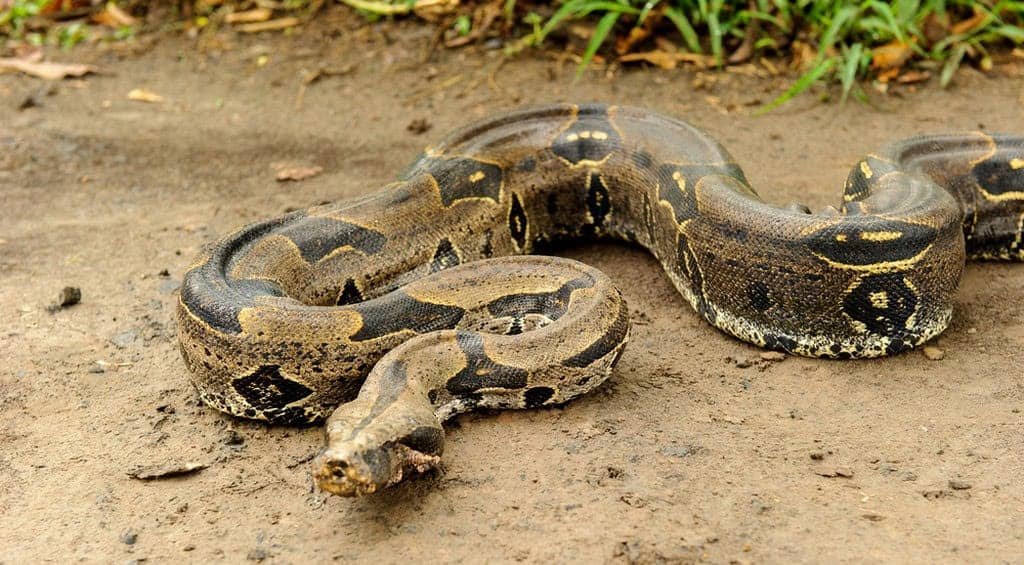
The boa constrictor can weigh up to 100 pounds (45 kilogrammes) and attain astonishing lengths of around 13 feet (4 meters), while being smaller than the top contenders. They live in forests, savannas, and agricultural areas, and they can be found all over Central and South America. With patterns that differ greatly in colour and style, boas employ camouflage to blend in with their surroundings and efficiently hide from both predators and prey. They are well-known for their effectiveness as constrictors; they specifically target tiny creatures, such as rodents and birds, and then squeeze them firmly to subdue them.
8. Yellow Anaconda (Eunectes notaeus)

A close relative of the green anaconda, the yellow anaconda can grow up to 13 feet (4 meters) in length and weigh about 120 pounds (54 kilogrammes). This snake is indigenous to Bolivia, Uruguay, and Paraguay, where it lives in rivers, swamps, and marshes. It may blend in with murky water thanks to its yellow-green colouring, which is speckled with black patches. The yellow anaconda’s diet is more limited than that of its larger cousin; it mostly eats fish, birds, and small mammals.
9. King Cobra (Ophiophagus hannah)
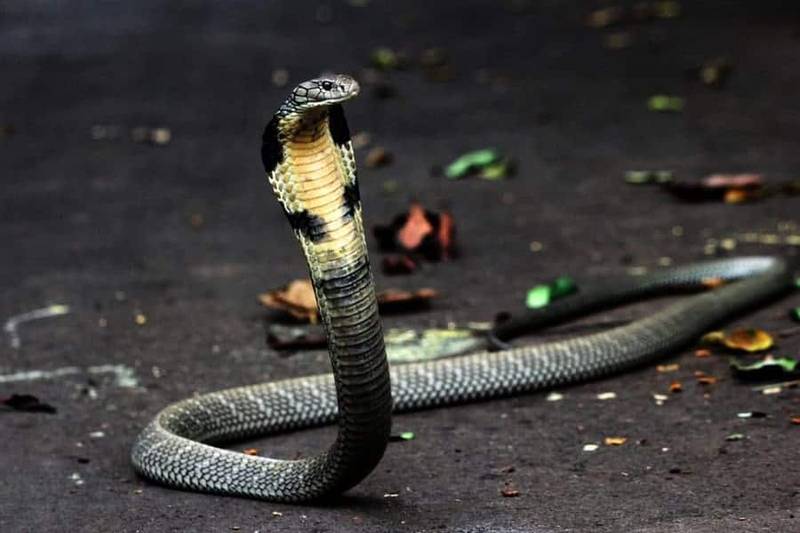
The king cobra is the world’s longest venomous snake, with adults often reaching lengths of 18 feet (5.5 meters). Found across the forests of Southeast Asia and the Indian subcontinent, this snake has an olive-brown coloration with a distinct hood it raises as a threat display. Unlike most large snakes, the king cobra preys almost exclusively on other snakes, including venomous species, displaying unique hunting behavior. Known for its lethal venom and ability to deliver large amounts in a single bite, the king cobra’s venom is potent enough to kill an elephant. Despite its deadly nature, it is generally wary of humans, using its hooded display to scare rather than attack.
10. Black Mamba (Dendroaspis polylepis)
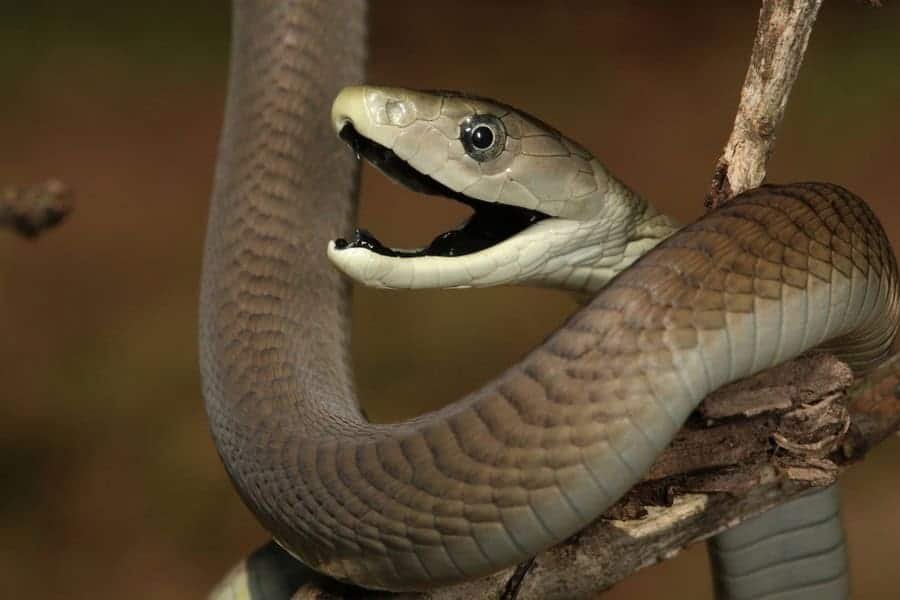
Named for the black colour inside its mouth, the black mamba is Africa’s longest venomous snake, reaching up to 14 feet (4.3 meters) in length. Despite being relatively small in comparison to other large snakes, it is renowned for its agility and speed, reaching up to 12 miles per hour (19 km/h). Its neurotoxic venom, which can kill a victim within hours, makes it one of the continent’s most feared snakes.
Titanoboa: The Largest Snake Ever to Have Existed
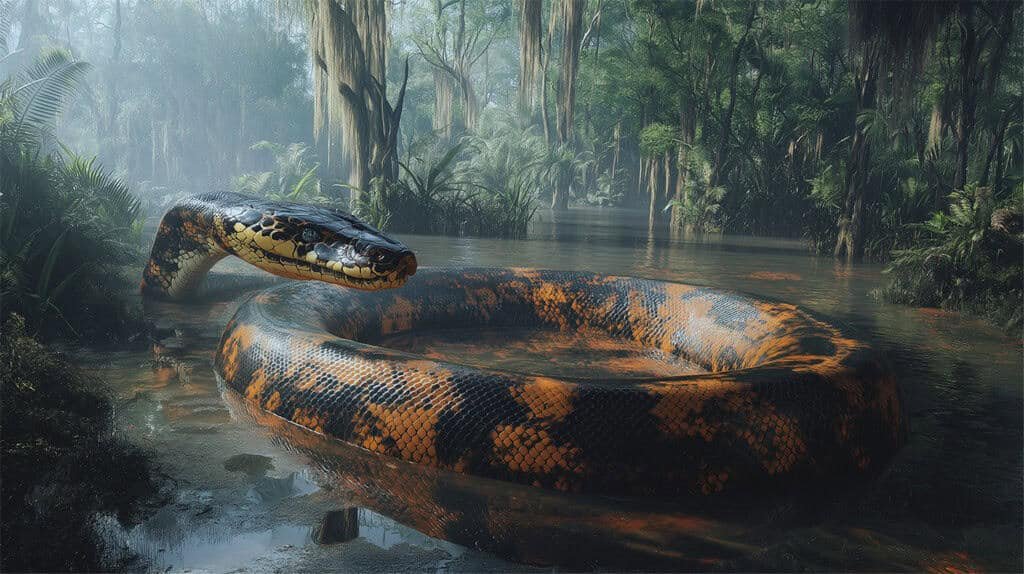
Titanoboa cerrejonensis is the largest snake known to have ever existed. It was found in Colombia’s Cerrejón coal mines and weighed over 2,500 pounds (1,135 kilogrammes), making it both the largest snake ever recorded and one of the largest terrestrial predators of its time. It lived about 60 million years ago in a warm, humid tropical environment that was similar to the Amazon Basin today.
Like modern boas and anacondas, Titanoboa was a constrictor, using its massive body to coil around and suffocate its prey. As an apex predator, Titanoboa dominated its swampy, riverine habitat by feeding primarily on large fish, crocodilians, and other large reptiles.
